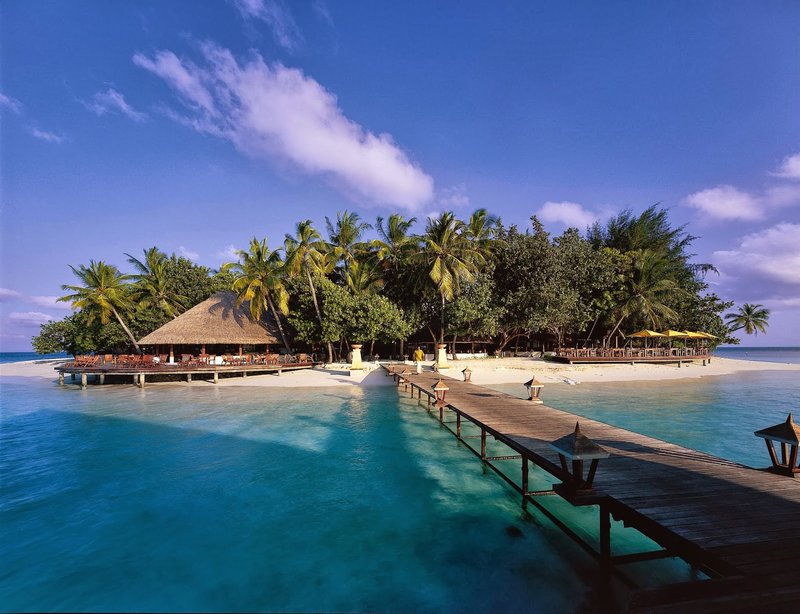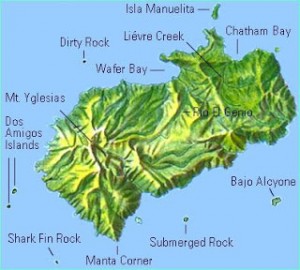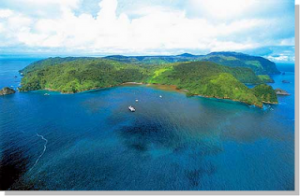
Cocos Islands in Costa Rica is an island of 2,385 hectareas and 46.6 kilometres of coast in the Pacific Ocean midway between the Galapagos Islands and Central America, some 532 kms southwest of Costa Rica.
This island is surrounded by emerald blue waters and represents one of the most precious treasures of mankind, to which the memorable oceanographer, marine scientist and professional diver Jacques Yves Cousteau Shooting (1910-1997) along with his crew of the ship Calypso, made known worldwide for global media by calling it beyond the 80 as “the most beautiful island in the world.”
In 1978 the government of Costa Rica declared as a National Park, and later was declared core Marine Conservation Area. In 1997, UNESCO declared world heritage natural beauty and biological wealth, and most recently was selected as a candidate to move to the 2nd qualifying round of the famous competition for the selection of the new seven wonders of the world.
Undoubtedly, the Cocos island is one of the best kept treasures of Costa Rica.
Its size, isolation and conservation status have made this island one of the most privileged natural sites worldwide, highlighting its lush vegetation on it, with some 235 plant species, of which 70 are endemic.
It also has high rates of precipitation volume (approx. 7,000 mm by year), resulting in the generation of abundant fresh water rivers and crystal, which becomes extraordinarily beautiful waterfalls that will fall into the sea from a height of 180 meters.
All this has created a unique biodiversity, to the point that the island can be categorized as an ideal natural laboratory for research on the evolution of species and monitoring the environment in the long term.
Despite the small number of visitors to the Cocos islands receives because of tourism, is a major diving center of the country and a great place for bird watching, as the island is an important nesting area for seabirds , some of them endemic and other relatives of their neighboring wildlife, the Galapagos Islands.
However, the island is also famous for the treasures buried there supposed pirates between the years 1684 and 1821, as well as inspire Michael Crichton to create the Isla Nublar in the film Jurassic Park. To reach Cocos Island is only accessible by sea.
The crossing takes about 32 hours and begins at the port of Puntarenas (very rarely in Guanacaste and Golfito).
For its size, isolation, and conservation status, Cocos Islands is one of the privileged natural sites worldwide. With a significant endemism and unique biodiversity, the island can be categorized as an ideal natural laboratory for research on the evolution of species and environmental monitoring long term.
The route is usually covered by tours ships, fishing ships, sailboats and private yachts.
Traveling to the Cocos Islands in Costa Rica is an unforgettable journey, particularly for nature lovers and diving enthusiasts. This remote paradise, situated in the Pacific Ocean approximately 550 km off the Costa Rican coast, is renowned for its crystal-clear waters, astonishing marine biodiversity, and pristine landscapes. Here’s how to get there and where to stay to fully enjoy your adventure in the Cocos Islands.
How to Get to the Cocos Islands
- Flight to Costa Rica: Your adventure starts with an international flight to San José, the capital of Costa Rica. Juan Santamaría International Airport serves as the main gateway and offers connections from various parts of the world.
- Transfer to Puntarenas: Upon arriving in San José, the next step is to head to Puntarenas, a port on the Costa Rican Pacific coast. You can choose a bus service, which is affordable and provides a panoramic view of the Costa Rican landscape, or opt for a taxi or private transfer, which, though more expensive, is faster and more comfortable.
- Boat Trip to the Cocos Islands: From Puntarenas, the only way to reach the Cocos Islands is by boat. This journey typically takes between 36 and 40 hours, depending on weather conditions.
Several companies offer diving expeditions that include transportation to the island, accommodation, and meals. It’s essential to book in advance, as these expeditions are highly popular and spots fill up quickly.
Where to Stay in the Cocos Islands
Since the Cocos Islands are a protected national park with no tourist infrastructure on land, accommodation options are limited to living aboard expedition boats.
These vessels are equipped to provide a comfortable and memorable experience, with private or shared cabins, common areas for socializing, and included meals. Some of the most recommended options include:
- Okeanos Aggressor I & II: These luxury yachts are specifically designed for divers. They offer 10-night trips to the Cocos Islands, with up to four dives daily at some of the world’s most spectacular diving sites.
- Sea Hunter: Known for its stability and comfort, the Sea Hunter is another excellent choice for diving enthusiasts. It offers similar trips with all the necessary amenities to ensure a pleasant and exciting stay.
- Argo: For those looking for an even more exclusive diving experience, the Argo offers not only regular dives but also the opportunity to dive in a submarine for explorations at depths few divers ever experience.
Exploring the Cocos Islands means diving into one of the planet’s last untouched paradises, where adventure and nature come together to offer a unique experience. Carefully preparing your trip will ensure you enjoy every moment in this spectacular destination. More places to visit in Costa Rica for snorkeling or diving.